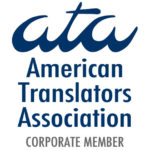With an estimated population of 44.3 million as of July 2006, Hispanics are the nation’s largest ethnic minority in the U.S. It’s no wonder that the three main presidential hopefuls (McCain, Obama, and Clinton until just recently) spend a lot of time and money courting this powerful demographic. The political realm is always convoluted and ever-changing, but throughout the presidential race, each contender has reached out to win over the Hispanic community in a variety of ways and to different degrees.
Each candidate has his or her webpage translated into Spanish and clicking through their online information and rhetoric shows varying levels of commitment to swaying the Hispanic vote in their favor.
Take, for instance, Obama’s Spanish language website. While all the navigational buttons are in Spanish, when you click on Temas (Issues), you are taken to a page in English. He also hasn’t updated his blog since the beginning of May.
Senator Hillary Clinton’s Spanish language website has a substantial amount of information and commentary in Spanish. But her navigational buttons are all in English and you must scroll down to the bottom to get to the Spanish information on the right sidebar.
John McCain’s website en Español has the most attractive, eye-catching layout and you can access the majority of his website in Spanish. Upon opening the website, a voice over from a former Cuban political prisoner presents support for McCain’s campaign.
Of course, the measure of a presidential candidate’s dedication to the Hispanic community can’t be solely determined by how well his or her website is translated. Each candidate has aired Spanish language TV and radio spots and both Clinton and Obama have released campaign songs in Spanish.
Follow these links for a sampling of the candidates’ multi-media Spanish outreach:
• John McCain’s first Spanish language ads.
• Barack Obama: Reggaeton campaign song; Viva Obama!; footage of a speech in Spanish.
• Hillary Rodham Clinton: song for Texas primaries; press release announcing ads, including a Spanish language one (note: has been removed from YouTube).
While each candidate purports to reaching out to the Hispanic community Obama seems to be getting the most press for his efforts. HispanicTips, which is a leading blog that compiles news of note for Latinos, is heavy on the Obama article links in their Election ’08 section. All three have web presences in Spanish, but what will really matter to the Latinos is the stance on issues of import that each takes.



